
http://www.iaeme.com/IJM/index.asp 38 editor@iaeme.com
International Journal of Management (IJM)
Volume 10, Issue 1, January-February 2019, pp. 38-42, Article ID: IJM_10_01_007
Available online at http://www.iaeme.com/ijm/issues.asp?JType=IJM&VType=10&IType=1
Journal Impact Factor (2019): 9.6780 (Calculated by GISI) www.jifactor.com
ISSN Print: 0976-6502 and ISSN Online: 0976-6510
© IAEME Publication
RESEARCH PAPER ON BELL CURVE METHOD
OF PERFORMANCE MANAGEMENT
Dr. Tejashree Deshmukh
Dean-Academics, PTVA’s Institute of Management
Vile Parle (East), Mumbai, India
Jigar Patel
Assistant Professor – HR, PTVA’s Institute of Management
Vile Parle (East), Mumbai, India
ABSTRACT
The most important competitive advantage any organization can have, is it’s
human capital. The organizations that know how to recruit, deploy, develop and retain
this most valued asset, will succeed in this world. Performance Management System is
one such tool that plays a crucial role in assessing, developing and retaining of the
employees. Todays’ organization need to think of Performance Appraisal System that
assesses the performance of employees objectively, motivates them to perform better,
allows them to develop required knowledge, skills and abilities and most importantly
helps the organizations retain the high performers. This paper aims to study Bell
Curve Method of Performance Appraisal which is widely used for this purpose, and
any alternatives that can help the organizations assess its employees better, thereby
helping them develop and retain the high performers.
Keywords: Performance Appraisal, Performance Management System (PMS), Bell
Curve.
Cite this Article: Dr. Tejashree Deshmukh and Jigar Patel, Research Paper on Bell
Curve Method of Performance Management, International Journal of Management,
10 (1), 2019, pp. 38-42.
http://www.iaeme.com/IJM/issues.asp?JType=IJM&VType=10&IType=1
1. BELL CURVE METHOD OF PERFORMANCE MANAGEMENT
The term “Performance Management” was first introduced by Michael Beer as an innovative
appraisal and development system. It was introduced as an improvement over the more
subjective, traditional performance appraisal system which was plagued by rater problems.
Performance Management System (PMS) is a comprehensive, integrated, business driven
system aimed at organizational and people development.
2. WHAT IS PERFORMANCE MANAGEMENT SYSTEM (PMS)
Performance Management System is the process of Performance Planning (goal setting),
Performance Monitoring and Coaching, Measuring (evaluating) Individual Performance

Dr. Tejashree Deshmukh and Jigar Patel
http://www.iaeme.com/IJM/index.asp 39 editor@iaeme.com
linked to organizational goals, giving him/her feedback, rewarding the individual based on
his/her achievements against set performance goals and required competencies, and working
out a plan for his/her development. (Sahu, 2007)
3. BELL CURVE METHOD OF PMS
Bell Curve Method of Performance Management is a Forced-distribution method where the
rater is required to assign employees in the work group to a limited number of categories so as
to approximate a normal frequency distribution. It was first introduced by Jack Welch of
General Electric wherein a predetermined percentage of employees is placed in each
performance category. The Bell Curve is a symmetric curve that is pronounced at the middle
and tapered off at the edges. The Bell Curve method of Performance Management is based on
the premise that in order to develop and thrive, the company must identify the best and the
worst performers, and nurture the former and rehabilitate and/or discard the latter. It
categorizes employees based on their performance and rewards or reprimands them
accordingly. Under this system, the performance of the employees who are engaged in similar
activities is compared and then the ranking is arrived at based on this performance. General
norm followed for this classification is: 20% as High Performers, 70% as Average Performers
and 10% as Non-Performers. However, there is no strict rule regarding this distribution.
4. WHY BELL CURVE METHOD OF PMS
4.1. To recognize Top Performers
It is very important for an organization to identify its high performers and reward them
accordingly. The Bell Curve Method requires the managers to make decisions and
differentiate between employees based on their performances. As high performers get
rewarded, they feel motivated and work harder to grow in the company. This eventually leads
to better career planning of these top performers and leads to better retention in the
organization. This kind of approach also strengthens succession planning.
4.2. To identify employee-job fit in an organization
The performance of an employee can be identified with the help of Bell Curve methods. An
adequate analysis of his/her performance with the help of proper HR interventions, can
identify if this employee is really suitable for the current job or not. This approach may reveal
other positions in the organization that may be more suited for the employee in the company.
The forced distribution with required analysis and HR intervention, can identify other
positions within the organization for employees. By keeping in mind their competencies,
strengths and career plans viz-a-viz the current openings, HR can be instrumental in planning
the employee development.
4.3. Efficient & effective allocation of Training to the employees
Bell curve method of Performance Management helps in identifying the gaps in the desired
performance and an actual performance which might be a result of lack of skill, knowledge or
ability on part of the employee. After identifying the reason, an organization can correct the
situation by providing necessary training to the employee to either acquire or upgrade the
existing skill, knowledge and ability. If an employee is found to be unsuitable for the
concerned job following Bell Curve Method of PMS, he/she can be reallocated to some other
portfolio.

Research Paper on Bell Curve Method of Performance Management
http://www.iaeme.com/IJM/index.asp 40 editor@iaeme.com
4.4. Minimize Rater’s Errors
Bell curve method of Performance Management helps in minimizing rater’s errors commonly
seen during the appraisal process. Error such as leniency or strictness as well as central
tendency are minimized while using the Bell curve method as it requires the employees to be
categorized in three groups.
5. PROBLEMS ASSOCIATED WITH BELL CURVE METHOD OF PMS:
5.1. Forced Distribution of Employees
Bell curve method forces the distribution of employees in three categories of High
Performers, Average Performers and Non-performers. Many times, this does not represent the
actual scenario. An organization may have more numbers of employees in any one category
who need to be pushed in to some other category due to forced distribution required under
Bell Curve Method.
5.2. Employees Tend to Concentrate More on Visible Performance than the
Required Performance
As the visible performance of the employee gets noticed quickly by the management rather
than the performance required, employees begin to concentrate their efforts on the
performance which will be more noticeable and may not pay attention to such factors which
might be very crucial to the success and effectiveness of the work done, but which may not be
noticeable.
5.3. Hampers Team Spirit in the Organization
As a result of constant pressure for high performance, employees get, employees get very
self-concerned. There develops a culture of distrust and misbelief. People hesitate helping the
fellow employees fearing that they will get better rating and as a result of these, the team
spirit in the organization suffers.
5.4. Reduced Morale
Employees are constantly under pressure for performance and are anxious about
consequences in case their performance is not up to the mark. Tough job market adds to their
anxiety and slowly this starts reducing their morale and affects their performance negatively.
5.5. Not suitable for Smaller Organizations:
In the organization with less than 300 employees, Bell Curve method may not work well
because the categorization of employees into high performers, average performers and non-
performers in such cases may be erroneous.
5.6. Increased Attrition
As a result of high anxiety and low morale due to constant pressure of high performance and a
fear that an employee can be shown a door at the slightest mistake, there is a possibility of
attrition rate in the organization increasing with Bell Curve method.
6. ALTERNATIVE TO BELL CURVE METHOD OF PMS IN TODAY’S
CONTEXT
Today, organizations have started realizing the limitations of Bell Curve Method of PMS
which discourages the team spirit which plays a crucial role in the success of any company in

Dr. Tejashree Deshmukh and Jigar Patel
http://www.iaeme.com/IJM/index.asp 41 editor@iaeme.com
current scenario. Such system breed unhealthy competition among employees and encourages
political behavior in the organization.
Hence, instead of following Bell Curve Method of PMS which relies on normal
distribution, a method following Power Law distribution, may yield better performance from
the employees and hence, better results for the organization.
Power law distribution for performance means a very small percentage of employees
contribute a disproportional amount of output. In 80/20 parlance, it means 80 percent of
output comes from 20 percent of employees. Power law distribution is more relevant in 21st
century organizations employing knowledge workers, whereas normal distribution was more
suitable for the manufacturing era. (O'Boyle et al, 2012)
When an organization tries to force a normal distribution upon a power law distribution, it
underestimates the work of high performer and overestimates the work of an average or low
performer.
Rewards in the organization should be based on performance distribution. Simply
speaking, salary differentials should reflect performance differentials. The difference in pay of
an outstanding and an average performer even in today’s companies, is only up to about 1.5
times most of the times. However, in some jobs like sales where variable compensation
prevails and performance can be clearly measured in numbers, the situation is improving
faster. Even today, only a handful of organizations have instituted salary differentials going
up to 300% within the same job grade. Such organizations that follow a high salary
differentiation policy have higher employee engagement.
The question is – Does individual performance follow a normal distribution or a power
law distribution? Many times it is difficult to measure performance objectively, and subjective
measures of performance are required to be used
It is primarily for HR practitioners to understand performance distribution for various
positions within the company and plan various HR processes including performance
management, compensation, career planning, learning & development etc. accordingly.
Bell Curve method which does not address the issues off unfairness and inequity, cannot
manage the transition from manufacturing economy to knowledge economy. It discourages
collaboration and doesn’t help in productivity. Today’s organizations must practise a
performance management system where the employees are assessed based on their work as
well as on the basis of their team work. Also the important points to be kept in mind would
be: does your organization follow a system of SMART objectives which makes it easier and
more objective to decide the performance and is there consistency in the performance of the
employee. An organization must have a feedback system as well as redressal system to
address the issues and need of the employees.
REFERENCES
[1] Gary, L, For Whom the Bell Curve Tolls, Harvard Management Review, 2001
[2] Grote, R. C. and D. Grote, Forced ranking: making performance management work. ,
Harvard Business Review, 2005
[3] Dr. Twinkle Prusty, Predicting Corporate Governance On Performance Measures In Select
Indian Corporates, International Journal of Advanced Research in Management (IJARM),
Volume 5, Issue 4, July- August (2014), pp. 01-10
[4] O'Boyle, Ernest, Jr.; Aguinis, Herma, The Best and the Rest: Revisiting the Norm of
Normality of Individual Performance, n, Personnel Psychology, v65, 2012,pp 79 – 119

Research Paper on Bell Curve Method of Performance Management
http://www.iaeme.com/IJM/index.asp 42 editor@iaeme.com
[5] Dr. Bishawjit Chandra Deb, ArupaSarker and Fahimul Kader Siddique. Relationship
between Corporate Governance and Financial Performance of Banking Industry in
Bangladesh. Journal of Management, 4(2), 2017, pp. 50–61.
[6] Repenning, N. P. and J. D. Sterman "Nobody ever gets the credit for fixing problems that
never happened: Creating and sustaining process improvement." California Management
Review 43(4): 64.
[7] Wijaya, Some Considerations of the Actual Problems Related to Good Corporate
Governance, and the Impetus for Law Enforcement. International Journal of Civil
Engineering and Technology, 8(9), 2017, pp. 867–873
[8] Sahu,R.K Performance Management System. Excel Books, New Delhi, 2007
[9] Vaishnav C., Khakifirooz A., Devos M, Punishing by Rewards: When the Performance Bell-
curve Stops Working for You, 2006.
[10] Use of Bell Curve in Performance Appraisals – Good or Bad? Extracted on February 8, 2019
fromhttps://www.peoplematters.in/article/performance-management/bell-curve-or-an-l-
curve-performance-management-once-again-14481


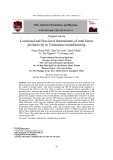
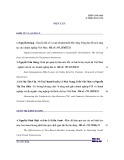
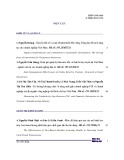

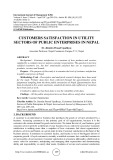


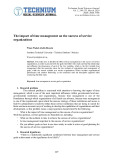
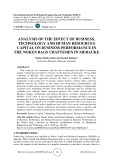








![20 câu hỏi Quản lý dự án phần mềm có đáp án [mới nhất]](https://cdn.tailieu.vn/images/document/thumbnail/2025/20251003/hieu2004haha@gmail.com/135x160/78791759734259.jpg)


![Tài liệu Quản lý dự án: Kiến thức nền tảng toàn diện [chuẩn SEO]](https://cdn.tailieu.vn/images/document/thumbnail/2025/20250910/kimphuong1001/135x160/92631757496585.jpg)



